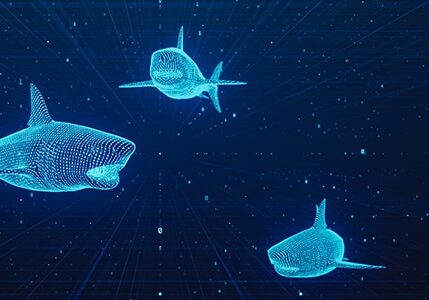Using Data Science for Ocean Conservation
Updated: June 19, 2024
Published: December 18, 2021

The Pacific Ocean has a big problem: A giant vortex of trash that swirls between California and Japan, covering an area perhaps as big as the size of Russia, filled with disposable and non-biodegradable plastics and wood fibers. According to Chris Maser, the patch has increased 10-fold each decade since 1945. Due to the patch’s low density, varying size, and constant movement, it cannot even be detected by most satellites. But hope exists: by using data science combined with creative engineering solutions, scientists and conservationists may be able to stem the tide against an increasingly damaged planet.
Some attempts have been made to identify and clean the patch, the most successful of which occurred in July and was undertaken by the Dutch nonprofit organization, “The Ocean Cleanup”. Their solution, called, ‘Jenny’, uses floating barriers nets pulled by Maersk ships—essentially “trawl fishing”—to collect small pieces of plastic from the patch, with an experiment in July successfully collecting over 9,000 kilograms of trash.
Engineering solutions—even low-tech versions like The Ocean Cleanup’s ‘Jenny’—are essential to successful cleanup efforts, yet are still responsive, rather than evaluative or preventative measures.
“Big Data”, “Artificial Intelligence”, and “Machine Learning”
Terms like ‘big data’, ‘artificial intelligence’, and ‘machine learning’ are thrown about constantly and often used as shorthand for any method of analyzing a massive amount of data with powerful computers. Generally, however, artificial intelligence is unique because, through the use of algorithms (or rules), it can run independently of an analyst, creating knowledge over time through identifying patterns and relationship in the dataset (which also may be ever-changing and updating).
Computers are excellent at identifying patterns, which is precisely the type of activity needed in image analysis for ocean conservation. While computers cannot “program themselves,” they can learn over time through following algorithms. This technology may already be in your pocket. If you’ve used a smartphone to take pictures that are later ‘stitched’ together, you’ve used AI in a similar fashion. Dr. Manuel Gonzalez-Rivero of the Australian Institute of Marine Science finds AI tools are 97% as accurate as humans at monitoring and analyzing underwater imagery, saving substantial resources and allowing far greater areas of the ocean to be monitored in order to deploy engineering solutions like Jenny. Combining commonly used underwater imagery in monitoring with automated image annotation can dramatically improve how we measure and monitor coral reefs worldwide, particularly in terms of allocating limited resources, rapid reporting and data integration within and across management areas.
AI is used on land to reconstruct areas and artifacts that may be threatened or already partially affected by climate change. The international research teams involved in the open-source Time Machine project aim to not only digitize huge amounts of information currently stored in archives and museums but to then use AI to analyze the data to reconstruct 2000 years of European history with a “Large Scale Historical Simulator”
For ocean conservation, one of artificial intelligence’s greatest opportunities and strengths lies in completing datasets that lack complete data. Imagine scientists come across a coral reef with satellite imagery that is incomplete, or whereby portions of the reef are no longer visible due to environmental degradation. As the quantity of data—in this case, images and analysis of coral reefs—increases, these algorithms become better able to learn and, subsequently, produce more accurate predictions of how a previously undamaged reef may have appeared.
Similarly, AI allows researchers to estimate the consequences of environmental degradation over time, given current pollution and global warming data. In an interview for Columbia University’s State of the Planet, Columbia professor of Ecology, Evolution, and Environmental Biology, Maria Uriarte stated,
“AI is going to revolutionize this field. It’s becoming more and more important for everything that we do. It allows us to ask questions at a scale that we could not ask from below. There’s only so much that one can do [on the ground] … and then there are areas that are simply not accessible. The flyovers and the AI tools are going to allow us to study hurricanes in a whole different way. It’s super exciting.”
Through using data science for ocean conservation, researchers and conservationists can solve one of the biggest problems facing conservationists: how to monitor 70% of the planet with minimal resources. AI allows these conservationists to efficiently diagnose the health of our oceans and direct unique engineering solutions, like Jenny, to overcome desperate, and immediate, environmental challenges.
